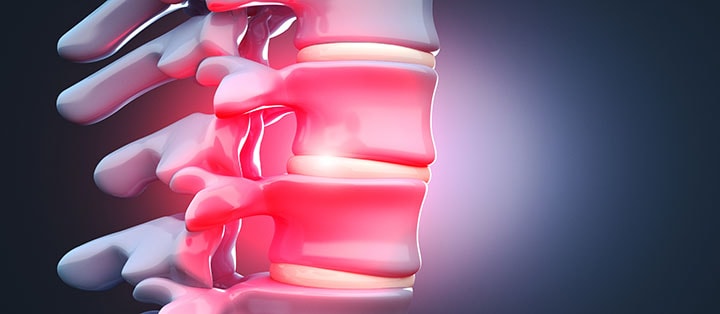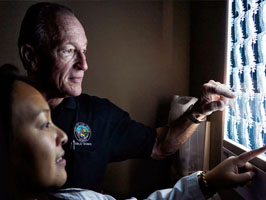The spinal cord, an integral part of the human body comprised of nerves and cells, travels from the brain stem down the back through the spinal column. Along its lengthy path, the spinal cord is shielded within a canal formed by the vertebral column. From this central structure, many sensitive nerves branch out and send messages to various regions of the body. This complex system allows our bodies to process sensory information, interact with the world, move and perform essential everyday activities.
Spinal narrowing, commonly referred to as “spinal stenosis,” is a condition in which the canal that houses the spinal cord abnormally tightens and becomes less wide. As a result of spinal narrowing, the spinal cord and the nerves that travel to and from may begin to be compressed. While this condition occurs most often in the lower back (known as the lumbar spine) and neck (known as the cervical spine) areas, spinal narrowing may develop in any segment of the vertebral canal. Debilitating symptoms may result and vary widely depending upon the location of the nerves being compressed.
Spinal narrowing is often a precursor to other spine injuries and conditions, as trouble in one element of the spine can quickly lead to problems with another component due to the structure’s highly interdependent nature. If not properly addressed, spinal stenosis can even mature into a life-threatening condition.

Spinal Narrowing Causes
By far the most prominent causes of spinal narrowing are age-related wear and tear to the body and the development of degenerative diseases. In fact, most individuals who suffer from spinal stenosis are over age 50, although persons of any age can encounter this condition. Several factors that may intensify or further encourage spinal narrowing include:• Bulging and herniated discs
• Spondylolisthesis (the slipping of one vertebra onto another)
• Genetic predisposition, family history and congenital spine issues
• Osteoarthritis and rheumatoid arthritis
• Benign tumors or cancer
• Sudden incidents or traumas, such as might occur during a high-impact sport, car accident or fall
• Bone spurs
• Excess weight or obesity
• Lack of exercise
• Malnutrition
• Paget’s disease of bone
• The atypical ossification of ligaments, particularly the posterior longitudinal ligament
• Repeatedly making movements that are bad for the back, as which might occur in a job that requires highly physical labor or regularly driving long distances
If one or more of these risk factors sounds familiar, schedule a consultation today. Our experienced physicians can attentively assess the health of your spine, which allows us to proactively treat complications like spinal narrowing before they become very painful or even detrimental to everyday life. We can also assist you in implementing several preventative measures to encourage life-long spine health.
Spinal Narrowing Symptoms
Because spinal narrowing can occur in different areas of the neck and back, symptoms oftentimes differ from patient to patient. Some individuals experiencing spinal narrowing may experience no outward symptoms at all, while others may be inhibited by chronic pain as a result of nerve compression. Common indicators of spinal narrowing include:• Pain, weakness or numbing in the legs, calves or buttocks if the spinal canal has narrowed in the lower back, or experiencing these symptoms in the shoulders, arms and legs if the damage is located in the neck region
• Radiating or cramping pain
• Sciatica
• Symptoms that may intensify when walking short distances or decrease when sitting, lying down or bending forwardA limited range of motion
• An inability to perform everyday activities, such as rising from bed, with a normal level of ease
A very rare form of spinal stenosis referred to as “cauda equina syndrome” may lead to the loss of bladder and bowel control, as well as muscle weakness and an inability to sense stimuli in one or both legs. Call 911 immediately if you or a loved one exhibit these symptoms as cauda equina syndrome can constitute a life-threatening emergency.

